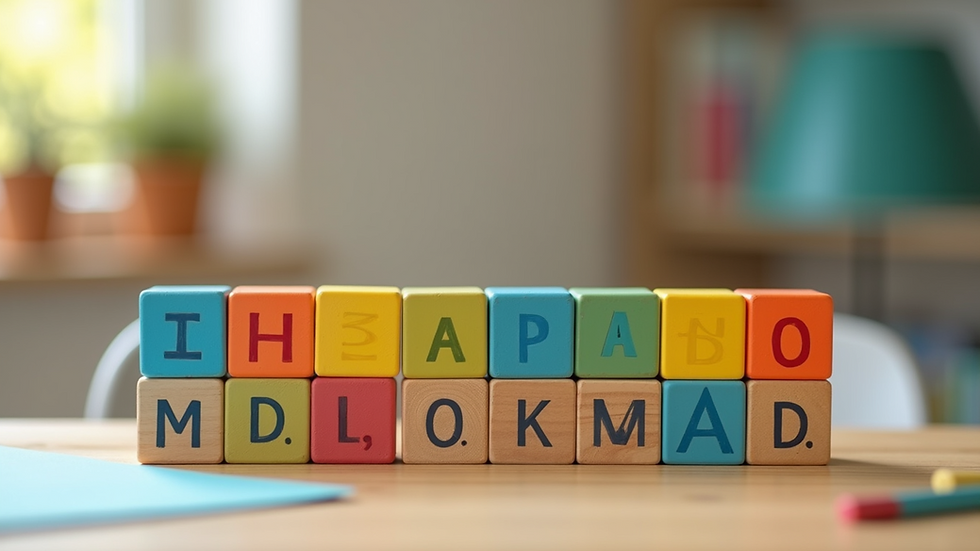Helping Kids Thrive: Simple Strategies for a Positive Learning Environment
- Jun 18
- 3 min read
Creating a space where children feel safe, inspired, and seen is one of the most powerful gifts we can offer — whether you’re a teacher, parent, or caregiver. When a child feels emotionally connected and mentally engaged, their natural ability to learn, grow, and shine blossoms.
Let’s explore some simple yet powerful ways to shape learning environments where confidence, creativity, and curiosity can flourish.
Every Child Learns Differently — And That’s a Beautiful Thing
Children are not one-size-fits-all. Some see the world in pictures, others tune in through sound, and many come alive through movement. Understanding how a child takes in information is the key to unlocking their learning potential.
✨ Visual learners light up with color, diagrams, and pictures. Use charts, visuals, and storytelling with imagery.
🎧 Auditory learners tune in with sounds. Reading aloud, songs, and rhythmic repetition help them retain information.
🌱 Kinesthetic learners thrive when they can move, touch, and interact. Give them space to build, act, and explore.
The moment we recognize a child’s unique learning style, we invite them into a world where learning feels like play, not pressure.

Inclusivity Isn’t Just a Value — It’s a Vibe
Children bloom in environments where their uniqueness is honored. Here’s how to foster inclusivity with intention:
🤝 Create collaborative moments. Group projects invite kids to learn from each other and celebrate different ways of thinking.
🌍 Celebrate diversity. Let your classroom or home reflect the beautiful variety of cultures, languages, and traditions.
🎨 Adapt and expand your tools. Videos, hands-on materials, music, and conversations give every learner a doorway in.
When we make space for every voice, every style, every background — we create a circle where all belong.

Emotional Safety First — Learning Follows
Before a child can open their mind, they must feel safe in their heart. When children feel seen and heard, they become ready to learn. Try these gentle shifts:
🕊️ Keep a rhythm. Consistent routines help kids feel anchored and at ease.
🌟 Celebrate often. Small wins matter. A kind word, a high-five, a moment in the spotlight can fuel self-esteem for weeks.
🌈 Be their safe space. When children know they can come to you — without fear or shame — their confidence expands.
Connection always comes before correction. Lead with love, and learning will follow.
Make Learning an Adventure
Let’s be honest — worksheets alone don’t spark imagination. But a game, a challenge, or an interactive story? Now we’re talking.
Here’s how to bring lessons to life:
💻 Use tech wisely. Educational apps, whiteboards, or virtual field trips can transform your teaching toolkit.
🎲 Gamify it. Turn math facts into a scavenger hunt. Turn spelling into a team challenge. Kids learn best when they’re having fun.
🔬 Make it tangible. Experiments, role-play, and field trips turn knowledge into lived experience.
When kids feel the learning, they remember the learning.

Grow Thinkers, Not Just Test-Takers
The world needs creative thinkers, problem solvers, and confident decision-makers. Here’s how to nurture those skills early:
❓ Ask open-ended questions. Let kids stretch their thinking with “why” and “what if” questions.
🧠 Normalize mistakes. Every “oops” is a stepping stone to mastery. Show them how to turn setbacks into breakthroughs.
🛠️ Use real-world projects. Let children research, create, and present their ideas. Ownership grows confidence.
Encouraging children to think for themselves builds a kind of inner strength no test score can measure.
Build Resilience from the Inside Out
We all want kids who can bounce back, try again, and keep going even when it’s hard. These habits help:
🥅 Set tiny, doable goals. Each small win rewires the brain for confidence.
🔍 Reflect together. Ask, “What did you notice? What worked well? What would you change next time?”
🧺 Offer responsibility. Let them lead a game, help a friend, or organize a space. Empowerment builds pride.
Children who are trusted learn to trust themselves — and that changes everything.
Final Thoughts: It Begins with Presence
Whether you’re in a classroom or around the kitchen table, your presence — calm, curious, and compassionate — is the greatest tool you have.
By tuning into your child’s needs, learning styles, and emotions, you create not just a learning environment, but a thrive environment.
Let’s raise kids who aren’t just good at school — but good at life.
🌿 Ready to support your child’s journey with more intention and ease? Let’s talk. At Thrive Mind Coaching, we help kids build confidence, calm their minds, and love learning again.
✨ Book a free 15-minute discovery call today.



Comments